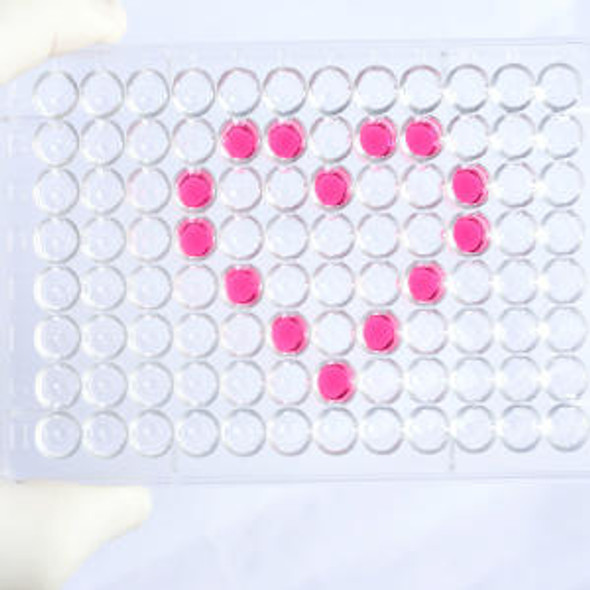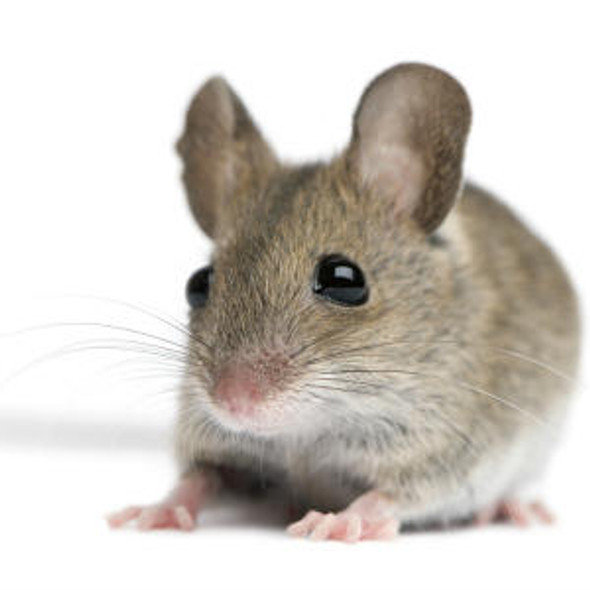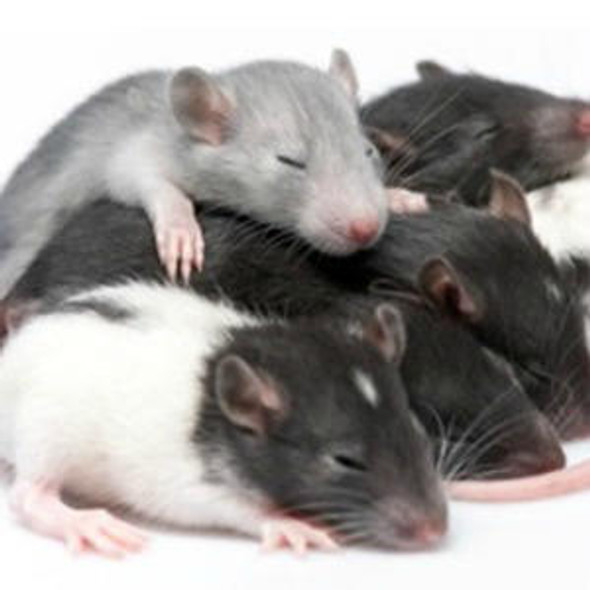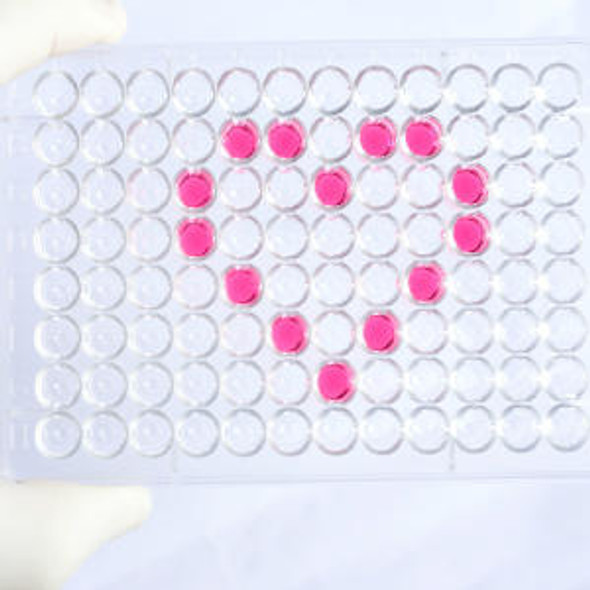Human CDK7 (Cyclin Dependent Kinase 7) ELISA Kit (HUES03200)
- SKU:
- HUES03200
- Product Type:
- ELISA Kit
- Size:
- 96 Assays
- Uniprot:
- P50613
- Sensitivity:
- 0.94mIU/mL
- Range:
- 1.56-100mIU/mL
- ELISA Type:
- Sandwich
- Reactivity:
- Human
- Sample Type:
- Serum, plasma and other biological fluids
- Research Area:
- Cell Cycle
Description
Human CDK7 (Cyclin Dependent Kinase 7) ELISA Kit
The Human CDK7 (Cyclin-Dependent Kinase 7) ELISA Kit offered by AssayGenie is a reliable and precise tool for the quantification of CDK7 levels in human serum, plasma, and cell culture supernatants. With its superior sensitivity and specificity, this kit delivers consistent and accurate results, making it the perfect choice for researchers in various fields.CDK7 is a key enzyme involved in cell cycle regulation and transcription, playing a crucial role in cell growth and division. Dysregulation of CDK7 has been associated with various diseases, including cancer and neurological disorders, highlighting its importance as a potential therapeutic target.
By utilizing the Human CDK7 ELISA Kit, researchers can investigate the role of CDK7 in cellular processes and disease development, ultimately advancing our understanding of these conditions and facilitating the development of innovative treatments. Trust AssayGenie for reliable and advanced solutions in your research endeavors.
| Assay type: | Sandwich |
| Format: | 96T |
| Assay time: | 4.5h |
| Reactivity: | Human |
| Detection Method: | Colormetric |
| Detection Range: | 1.56-100 mIU/mL |
| Sensitivity: | 0.94 mIU/mL |
| Sample Volume Required Per Well: | 100µL |
| Sample Type: | Serum, plasma and other biological fluids |
| Specificity: | This kit recognizes Human CDK7 in samples. No significant cross-reactivity or interference between Human CDK7 and analogues was observed. |
This ELISA kit uses Sandwich-ELISA as the method. The micro ELISA plate provided in this kit has been pre-coated with an antibody specific to Human CDK7. Standards or samples are added to the appropriate micro ELISA plate wells and combined with the specific antibody. Then a biotinylated detection antibody specific for Human CDK7 and Avidin-Horseradish Peroxidase (HRP) conjugate are added to each micro plate well successively and incubated. Free components are washed away. The substrate solution is added to each well. Only those wells that contain Human CDK7, biotinylated detection antibody and Avidin-HRP conjugate will appear blue in color. The enzyme-substrate reaction is terminated by adding Stop Solution and the color turns yellow. The optical density (OD) is measured spectrophotometrically at a wavelength of 450 nm ± 2 nm. The OD value is proportional to the concentration of Human CDK7. The concentration of Human CDK7 in samples can be calculated by comparing the OD of the samples to the standard curve.
| UniProt Protein Function: | CDK7: a protein kinase of the CDK family. Forms a trimeric complex with cyclin H and MAT1, which functions as a Cdk-activating kinase (CAK). Activates the cyclin-associated kinases CDK1, -2, -4 and -6. An essential component of the transcription factor TFIIH, that is involved in transcription initiation and DNA repair. Serves as a direct link between the regulation of transcription and the cell cycle. Phosphorylates and activates RNA polymerase II, allowing its escape from the promoter and elongation of the transcripts. Involved in cell cycle control and in RNA transcription by RNA polymerase II. Its expression and activity are constant throughout the cell cycle. |
| UniProt Protein Details: | Protein type:Protein kinase, CMGC; Nuclear receptor co-regulator; Protein kinase, Ser/Thr (non-receptor); Kinase, protein; Cell cycle regulation; EC 2. 7. 11. 23; EC 2. 7. 11. 22; CMGC group; CDK family; CDK7 subfamily; CDK/CDK7 subfamily Chromosomal Location of Human Ortholog: 5q12. 1 Cellular Component: cytoplasm; holo TFIIH complex; mitochondrion; nucleoplasm; nucleus Molecular Function:DNA-dependent ATPase activity; kinase activity; protein binding; protein C-terminus binding; protein kinase activity; protein serine/threonine kinase activity; RNA polymerase subunit kinase activity Biological Process: cell cycle arrest; cell proliferation; G1/S transition of mitotic cell cycle; G2/M transition of mitotic cell cycle; mRNA capping; nucleotide-excision repair, preincision complex assembly; positive regulation of transcription from RNA polymerase II promoter; regulation of cyclin-dependent protein kinase activity; RNA elongation from RNA polymerase I promoter; RNA elongation from RNA polymerase II promoter; snRNA transcription from RNA polymerase II promoter; termination of RNA polymerase I transcription; transcription from RNA polymerase II promoter; transcription initiation from RNA polymerase I promoter; transcription initiation from RNA polymerase II promoter; transcription-coupled nucleotide-excision repair |
| NCBI Summary: | The protein encoded by this gene is a member of the cyclin-dependent protein kinase (CDK) family. CDK family members are highly similar to the gene products of Saccharomyces cerevisiae cdc28, and Schizosaccharomyces pombe cdc2, and are known to be important regulators of cell cycle progression. This protein forms a trimeric complex with cyclin H and MAT1, which functions as a Cdk-activating kinase (CAK). It is an essential component of the transcription factor TFIIH, that is involved in transcription initiation and DNA repair. This protein is thought to serve as a direct link between the regulation of transcription and the cell cycle. [provided by RefSeq, Jul 2008] |
| UniProt Code: | P50613 |
| NCBI GenInfo Identifier: | 1705722 |
| NCBI Gene ID: | 1022 |
| NCBI Accession: | P50613. 1 |
| UniProt Secondary Accession: | P50613,Q9BS60, Q9UE19, |
| UniProt Related Accession: | P50613 |
| Molecular Weight: | 39,038 Da |
| NCBI Full Name: | Cyclin-dependent kinase 7 |
| NCBI Synonym Full Names: | cyclin dependent kinase 7 |
| NCBI Official Symbol: | CDK7 |
| NCBI Official Synonym Symbols: | CAK; CAK1; HCAK; MO15; STK1; CDKN7; p39MO15 |
| NCBI Protein Information: | cyclin-dependent kinase 7 |
| UniProt Protein Name: | Cyclin-dependent kinase 7 |
| UniProt Synonym Protein Names: | 39 kDa protein kinase; p39 Mo15; CDK-activating kinase 1; Cell division protein kinase 7; Serine/threonine-protein kinase 1; TFIIH basal transcription factor complex kinase subunit |
| Protein Family: | Cyclin-dependent kinase |
| UniProt Gene Name: | CDK7 |
| UniProt Entry Name: | CDK7_HUMAN |
As the OD values of the standard curve may vary according to the conditions of the actual assay performance (e. g. operator, pipetting technique, washing technique or temperature effects), the operator should establish a standard curve for each test. Typical standard curve and data is provided below for reference only.
| Concentration (mIU/mL) | O.D | Average | Corrected |
| 100 | 2.42 2.444 | 2.432 | 2.348 |
| 50 | 1.489 1.515 | 1.502 | 1.418 |
| 25 | 0.914 0.888 | 0.901 | 0.817 |
| 12.5 | 0.399 0.411 | 0.405 | 0.321 |
| 6.25 | 0.259 0.241 | 0.25 | 0.166 |
| 3.13 | 0.179 0.175 | 0.177 | 0.093 |
| 1.56 | 0.125 0.139 | 0.132 | 0.048 |
| 0 | 0.082 0.086 | 0.084 | -- |
Precision
Intra-assay Precision (Precision within an assay): 3 samples with low, mid range and high level Human CDK7 were tested 20 times on one plate, respectively.
Inter-assay Precision (Precision between assays): 3 samples with low, mid range and high level Human CDK7 were tested on 3 different plates, 20 replicates in each plate.
| Intra-assay Precision | Inter-assay Precision | |||||
| Sample | 1 | 2 | 3 | 1 | 2 | 3 |
| n | 20 | 20 | 20 | 20 | 20 | 20 |
| Mean (mIU/mL) | 4.76 | 14.47 | 39.13 | 4.40 | 14.32 | 40.82 |
| Standard deviation | 0.29 | 0.70 | 1.70 | 0.22 | 0.58 | 1.71 |
| C V (%) | 6.09 | 4.84 | 4.34 | 5.00 | 4.05 | 4.19 |
Recovery
The recovery of Human CDK7 spiked at three different levels in samples throughout the range of the assay was evaluated in various matrices.
| Sample Type | Range (%) | Average Recovery (%) |
| Serum (n=5) | 94-107 | 100 |
| EDTA plasma (n=5) | 90-104 | 97 |
| Cell culture media (n=5) | 90-104 | 97 |
Linearity
Samples were spiked with high concentrations of Human CDK7 and diluted with Reference Standard & Sample Diluent to produce samples with values within the range of the assay.
| Serum (n=5) | EDTA plasma (n=5) | Cell culture media (n=5) | ||
| 1:2 | Range (%) | 85-99 | 95-109 | 94-110 |
| Average (%) | 92 | 102 | 101 | |
| 1:4 | Range (%) | 88-103 | 87-100 | 87-103 |
| Average (%) | 95 | 92 | 94 | |
| 1:8 | Range (%) | 93-105 | 84-98 | 86-97 |
| Average (%) | 99 | 91 | 92 | |
| 1:16 | Range (%) | 87-102 | 86-96 | 85-100 |
| Average (%) | 95 | 91 | 91 |
An unopened kit can be stored at 4°C for 1 month. If the kit is not used within 1 month, store the items separately according to the following conditions once the kit is received.
| Item | Specifications | Storage |
| Micro ELISA Plate(Dismountable) | 8 wells ×12 strips | -20°C, 6 months |
| Reference Standard | 2 vials | |
| Concentrated Biotinylated Detection Ab (100×) | 1 vial, 120 µL | |
| Concentrated HRP Conjugate (100×) | 1 vial, 120 µL | -20°C(shading light), 6 months |
| Reference Standard & Sample Diluent | 1 vial, 20 mL | 4°C, 6 months |
| Biotinylated Detection Ab Diluent | 1 vial, 14 mL | |
| HRP Conjugate Diluent | 1 vial, 14 mL | |
| Concentrated Wash Buffer (25×) | 1 vial, 30 mL | |
| Substrate Reagent | 1 vial, 10 mL | 4°C(shading light) |
| Stop Solution | 1 vial, 10 mL | 4°C |
| Plate Sealer | 5 pieces | |
| Product Description | 1 copy | |
| Certificate of Analysis | 1 copy |
- Set standard, test sample and control (zero) wells on the pre-coated plate and record theirpositions. It is recommended to measure each standard and sample in duplicate. Note: addall solutions to the bottom of the plate wells while avoiding contact with the well walls. Ensuresolutions do not foam when adding to the wells.
- Aliquot 100µl of standard solutions into the standard wells.
- Add 100µl of Sample / Standard dilution buffer into the control (zero) well.
- Add 100µl of properly diluted sample (serum, plasma, tissue homogenates and otherbiological fluids) into test sample wells.
- Cover the plate with the sealer provided in the kit and incubate for 90 min at 37°C.
- Aspirate the liquid from each well, do not wash. Immediately add 100µL of BiotinylatedDetection Ab working solution to each well. Cover the plate with a plate seal and gently mix. Incubate for 1 hour at 37°C.
- Aspirate or decant the solution from the plate and add 350µL of wash buffer to each welland incubate for 1-2 minutes at room temperature. Aspirate the solution from each well andclap the plate on absorbent filter paper to dry. Repeat this process 3 times. Note: a microplatewasher can be used in this step and other wash steps.
- Add 100µL of HRP Conjugate working solution to each well. Cover with a plate seal andincubate for 30 min at 37°C.
- Aspirate or decant the solution from each well. Repeat the wash process for five times asconducted in step 7.
- Add 90µL of Substrate Reagent to each well. Cover with a new plate seal and incubate forapproximately 15 min at 37°C. Protect the plate from light. Note: the reaction time can beshortened or extended according to the actual color change, but not by more than 30min.
- Add 50 µL of Stop Solution to each well. Note: Adding the stop solution should be done inthe same order as the substrate solution.
- Determine the optical density (OD value) of each well immediately with a microplate readerset at 450 nm.






